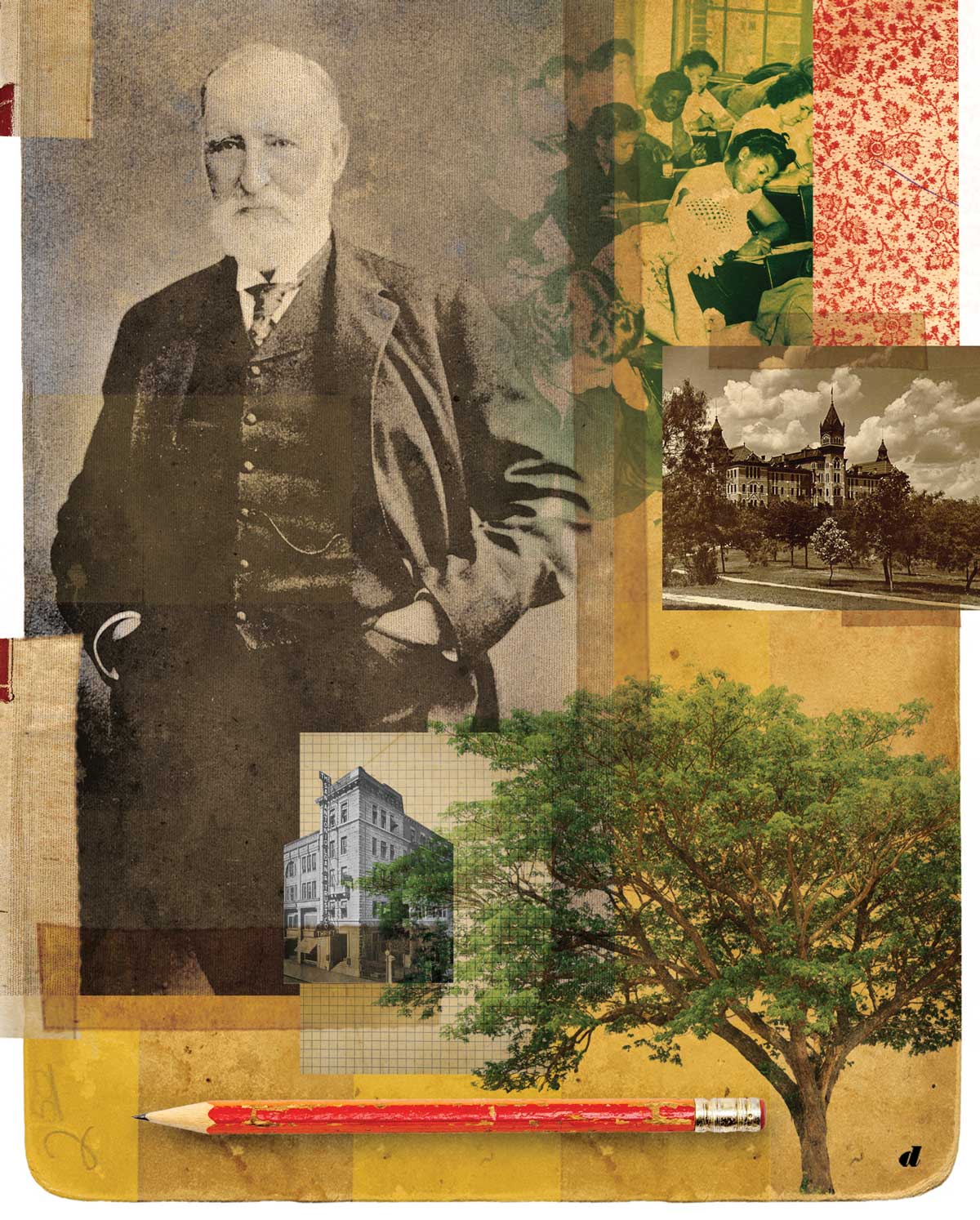George Washington Brackenridge may have given more to Texas than anyone else. He donated 199 acres for his namesake park in San Antonio, which now includes a zoo, museums, a golf course, a Japanese tea garden and other features in an enchanting setting that today encompasses 343 acres.
But Brackenridge Park was not the philanthropist’s most impactful gift. That was the oil money that supports the University of Texas and Texas A&M University systems. As the longest-serving University of Texas regent—25 years—Brackenridge insisted that West Texas lands set aside for the university by the Legislature be transferred from the state to university control.
Listen to Author W.F. Strong Read This Story
Not long after Brackenridge died in 1920, Santa Rita No. 1 brought in the first oil money and the start of the Permanent University Fund, which provides for construction of university buildings. Brackenridge’s influence made sure the money stayed with UT and A&M and was not siphoned off by the Legislature.
Brackenridge was so protective of UT that when Gov. James “Pa” Ferguson threatened to eliminate university funding because he disagreed with the institution’s hiring practices, Brackenridge pledged to cover the university’s operating costs for the biennium if Ferguson made good on his threat. It didn’t come to that.
In addition to his visionary services as a regent, Brackenridge donated 503 acres along the Colorado River in Austin to UT in 1910. That land today includes a municipal golf course, the Brackenridge Field Lab and student housing.
Brackenridge made the bulk of his fortune as president of San Antonio National Bank and San Antonio Loan and Trust.
He was troubled by the fact that his father had enslaved people, so the younger Brackenridge attempted to create his own reparations plan. He calculated how much money should have been paid to the enslaved people and gave hundreds of thousands of dollars for African American education.
Brackenridge also championed the admittance of women into UT. He insisted on hiring female faculty and demanded complete equality for women. When women couldn’t attend the university’s medical school in Galveston for a lack of housing, he donated funds to build a dormitory. He supported women’s suffrage because he believed women would help build a better society through political influence.
He never married and had no children, and upon his death, at age 88, Brackenridge put the bulk of his wealth into the George W. Brackenridge Foundation—the first of its kind in Texas. The foundation now emphasizes support for charter schools. Brackenridge preferred to invest in people rather than buildings, and he especially loved investing in young people. During his life he loaned untold sums to students for college, and all they had to do was sign a contract that said, “I agree to repay when circumstances permit.”
By his own standards, Brackenridge lived a successful life. He said that he wished the world would be a little better place for his having lived in it.


